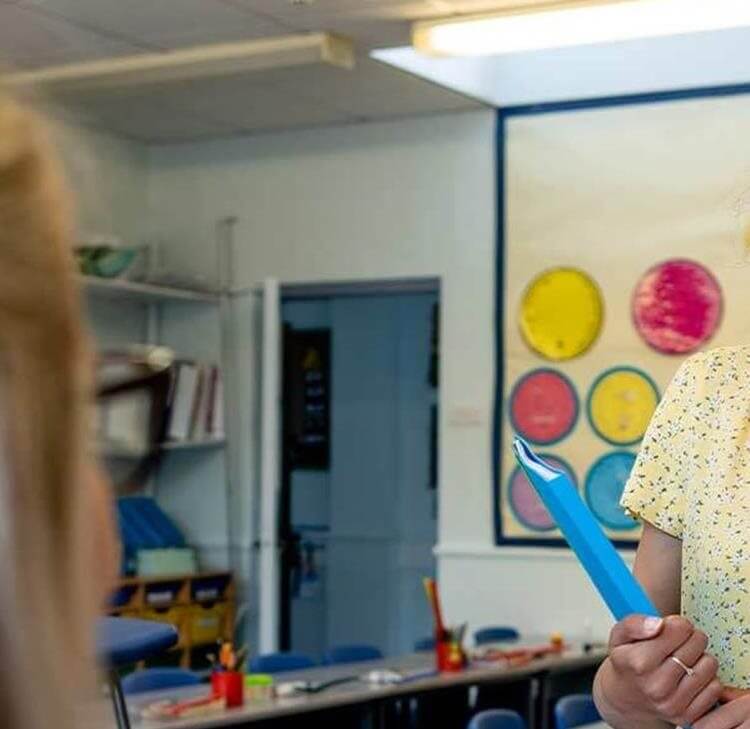Everyone’s Invited – Ofsted to review safeguarding policies
Ofsted has announced that it will begin an immediate review of school safeguarding policies. It is now time that you take steps to ensure your policies and procedures are up to date.
Along with an NSPCC-run helpline to offer advice to children and adults, Ofsted has announced that it will begin an immediate review of school safeguarding policies.
As a follow on from our first legal update on this issue, it is now time that you take steps to ensure your policies and procedures are up to date. You should also ensure that your staff have received the appropriate safeguarding training and that you can evidence the outcomes of that training - their knowledge.
1. When to review
2. Your safeguarding policies
3. Child-on-child abuse policy
4. Staff training
5. Curriculum, culture and student reporting
6. Further help and support
1. When to review
For the moment it is unclear when Ofsted will begin its review but given that the news reports refer to the “immediate review” it’s safe to assume it will start now. That review will include your Child Protection policy but may well include other policies that fall under the broad definition of ‘safeguarding policies’, such as your Managing Allegations Against Staff policy.
Do not delay a review of your own safeguarding policies; get it done now.
2. Your safeguarding policies
There are three cornerstones to excellent safeguarding practice: paper (policies, procedures and model documents), people and practice. If one of those cornerstones is weak, your safeguarding practice will suffer. Getting your policy right is critical.
You will all have one in place and I’m confident you review yours annually. Before we set out what the best safeguarding policies look like, here are the top four reasons safeguarding policies fail:
- They do not meet guidance/Ofsted expectations – the guidance is clear on what should be in your policy and Ofsted makes is clear what it expects to see. This is the case for child-on-child sexual assault and sexual harassment (see below for what is required).
- Poorly drafted, hard to follow – the primary objective of your safeguarding policies is to educate staff on safeguarding expectation in your setting. If your policy is hard to follow or poorly written, staff will disengage.
- Ineffective dissemination – you may have the best safeguarding policies, but if they are not effectively disseminated to all staff they will fail.
- Staff knowledge not checked – once disseminated, asking staff to confirm they have read it provides no evidence of their understanding of the policy. You need to be able to evidence their understanding.
To avoid these pitfalls, there are three areas upon which you should focus:
i. Drafting
Cover only what needs to be covered
When reviewing your safeguarding policies, cast a critical eye over the content. Is it all required? Could it be more succinct?
The best approach is to reduce or remove content that is no longer required rather than just updating the policy with the new safeguarding expectations we see in each iteration of the guidance. Get this right and the policy will stay sharp and focused, which in turn makes it more accessible. The more accessible it is, the easier it is to understand and implement.
Spin-out separate policies if needed
To keep the policy to a manageable size and to provide the right focus on a particular issue, do not be afraid to spin out specific issues into a separate policy. To do this, have a short paragraph in your safeguarding policies that states the importance of that issue in your school and linking through from that paragraph to a separate policy.
If you have had incidents of child-on-child sexual assault or sexual harassment or now consider it a high-profile issue, you should consider whether this issue now warrants a separate policy.
ii. Finalise and implement
Critically assess and welcome challenge
Once drafted, get a fresh set of eyes to review the policy to make sure it flows and makes sense. That could be a staff member, a family member or someone else; what is important is the feedback: what works and what needs to change.
The governor sign-off stage needs rigour. The policy should be reviewed thoroughly by (at least) the safeguarding governor, and the DSL questioned on it to make sure it stands up to scrutiny. Does it cover off everything guidance and Ofsted require? Does it flow? Is it easy to follow? Spend time on this stage to make sure your policy is as strong as it can be.
Disseminate and train
Ensure all staff receive, read and understand the policy. We often see confirmation of receipt of the policy or confirmation of having read the policy put forward as evidence of staff understanding. At best, this is evidence that a policy has been read. It is not evidence of understanding (see, 5 below for more on staff training).
Finally, have a single source of truth. From where should staff access the policy? From where do they actually access it? The more places there are, the harder it is to manage version control.
iii. Continuous improvement
Each safeguarding incident offers a learning opportunity and part of that learning should include reflecting on how well the policy and procedures worked. Take these opportunities, consider improvements and either amend the policy at the time (if the seriousness of the failing warrants it) or note the improvement and make it as part of your annual review.
3. Child-on-child abuse policy
It goes without saying that this part of your policy (whether it forms part of your wider Child Protection policy or it is a policy in its own right) will be subject to greater scrutiny. As well as taking note of the points above, make sure it:
- sets out the ‘why’, including the harm caused by this abuse and that staff will be alert to it
- states that all child-on-child abuse is unacceptable
- lists and describes the forms of child-on-child abuse
- says that such abuse should never be tolerated or passed off as ‘banter’ or ‘part of growing up’
- explains that different gender issues can be prevalent
- sets out the steps you take in your setting to minimise or prevent child-on-child abuse
- explains that all reports will be passed to the DSL immediately and investigated, and what the process entails
- that when reports of sexual violence or sexual harassment are made, the school will act in accordance with Part 5 of Keeping Children Safe in Education (2020)
- explains how you support those involved
Part 5 of Keeping Children Safe in Education (2020) provides 13 pages of guidance to support you with managing reports of sexual violence or sexual harassment. As we said in our earlier advice, it is wise to reacquaint yourself with this advice and the more detailed DfE advice referenced in the first paragraph of Part 5.
This guidance should form the skeleton of your procedure for managing reports of sexual assault and sexual harassment.
4. Staff training
We expect Ofsted to ask to see your evidence of effective staff training on your safeguarding policies. If it does, it will probably focus on two things: your due diligence on the provider and, most importantly, the data you can provide to evidence staff knowledge.
Whether you choose face-to-face training or use an online provider, the due diligence point is the same: make sure the content is correct, delivered well and engages your staff. The more engaging it is, the better the outcomes - outcomes that we then need to measure.
You need to be able to provide data that evidences staff understanding. This can be as simple as a short multiple-choice test through applications like Google Forms, Microsoft Forms, Kahoot or SurveyMonkey, or through outcomes-focused training that the better online providers offer as part of their package. Our EduCompli package certainly meets this enhanced standard.
If you are not sure what you have provides the evidence you need, ask yourself these three questions:
1. For each individual staff member, can I review a document that tells me the extent to which they understood the training/our policies?
2. For my staff group as a whole, can I review a document that highlights the knowledge gaps?
3. Can I review and understand those knowledge gaps quickly and easily, and take steps to plug them?
If you can answer yes to all three questions, then you are where you need to be. If you cannot, then you need to review how you currently evidence the outcomes of your staff training. As a reminder, staff receiving the policies is not evidence of their knowledge of the content. Staff saying they have read the policies is not evidence of knowledge.
5. Curriculum, culture and student reporting
For the moment, the focus is policies, but it would not be a surprise if the Ofsted review went a little wider and took at least a passing glance at how you teach students about safeguarding, healthy and respectful relationships, respectful behaviour and consent, how sexual violence and sexual harassment is always wrong, and how you promote an open, honest and respectful culture in your setting.
As we said in our earlier advice, it makes sense to consider your current approach now. Alongside it, review how you manage reports and how easy it is for students to make them. This is more than looking at how clear and simple your process may be; you need to cast a critical eye over your culture and engage with students about how they feel about reporting, what barriers they believe exist and what they think would make for a better approach.
6. Further help and support
Our policies service provides you with a suite of 40 education and HR policies (including child protection), which are reviewed and updated annually. We can also carry out a review of your policy, if preferred.
We provide face-to-face staff training (either remotely or in person) and EduCompli, our own online staff training package, provides staff with high-quality online training and includes a management platform where you can evidence the outcomes of that training.
For additional queries relating to this or any other issue, please contact us.
Contact

Dai Durbridge
Partner
dai.durbridge@brownejacobson.com
+44 (0)330 045 2105








































